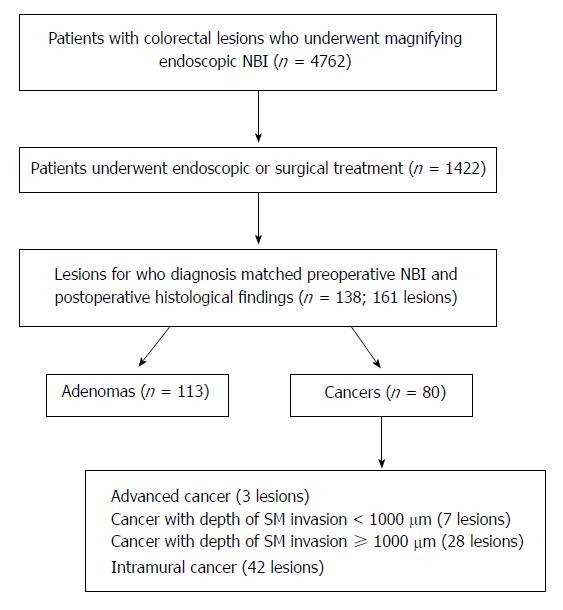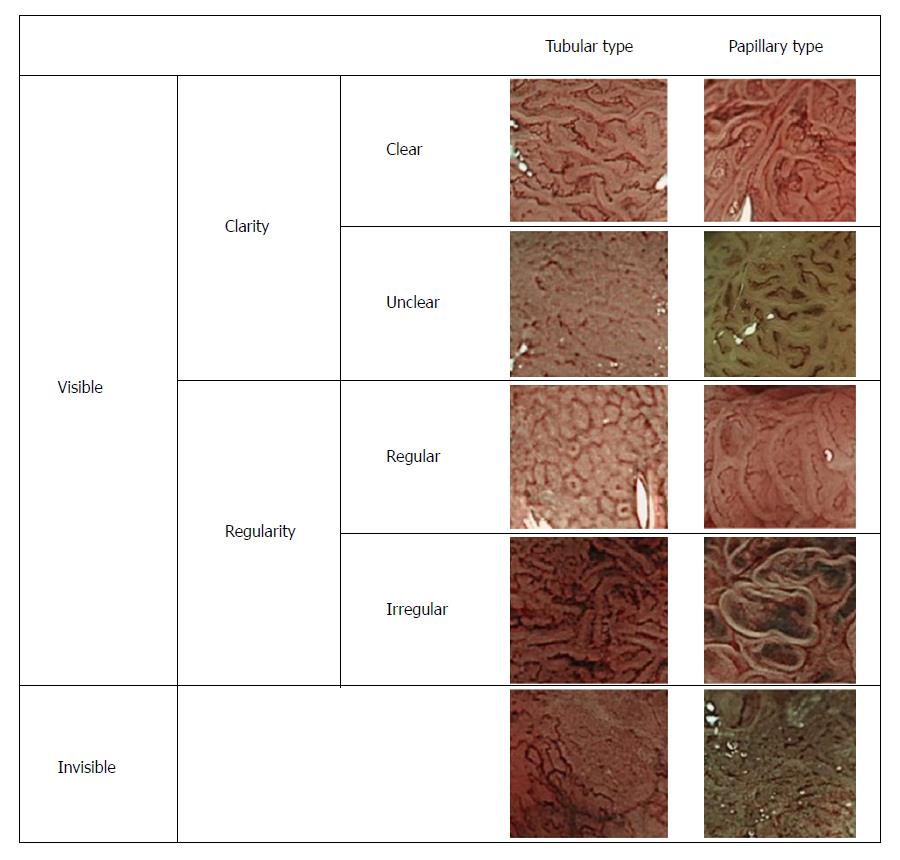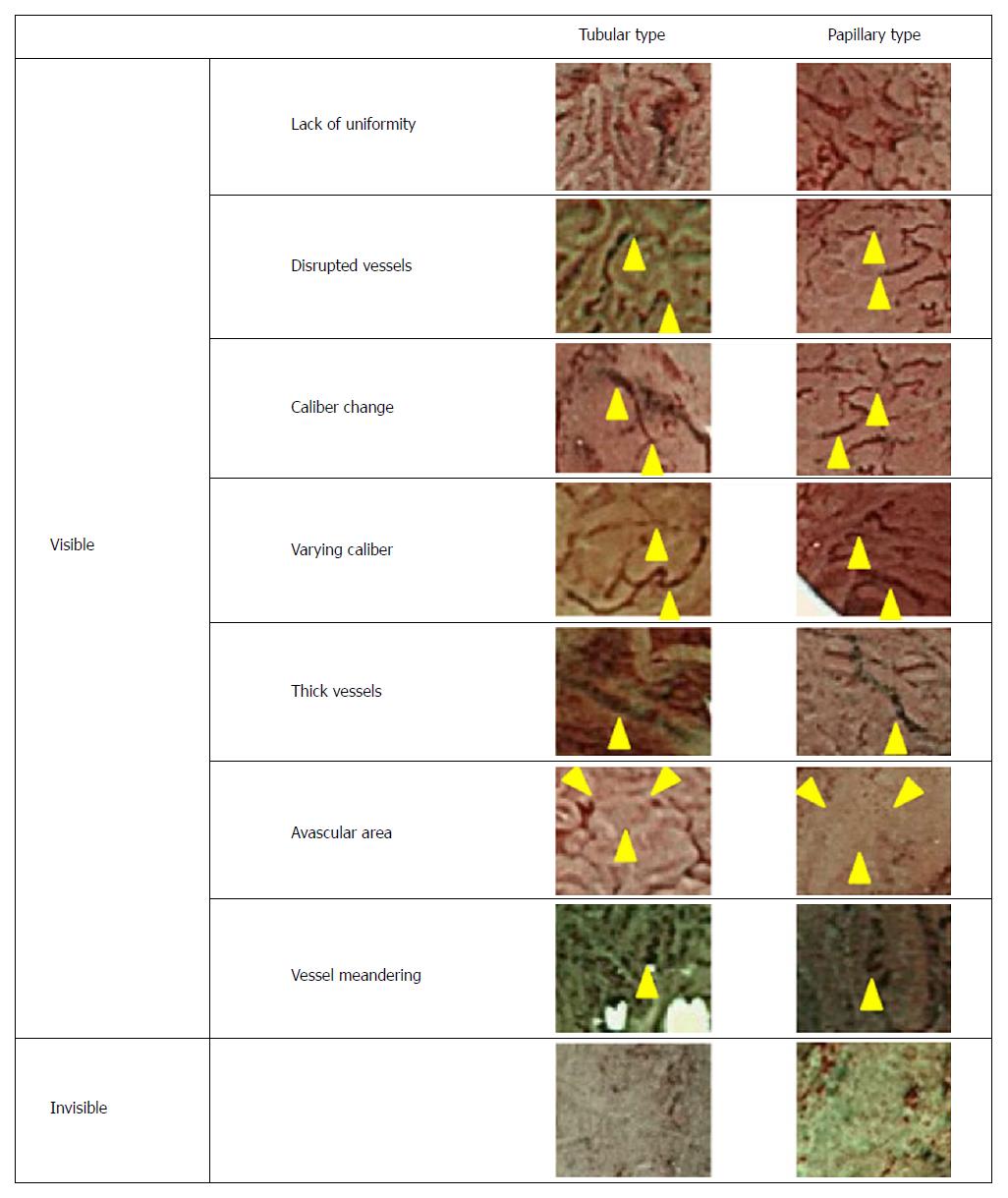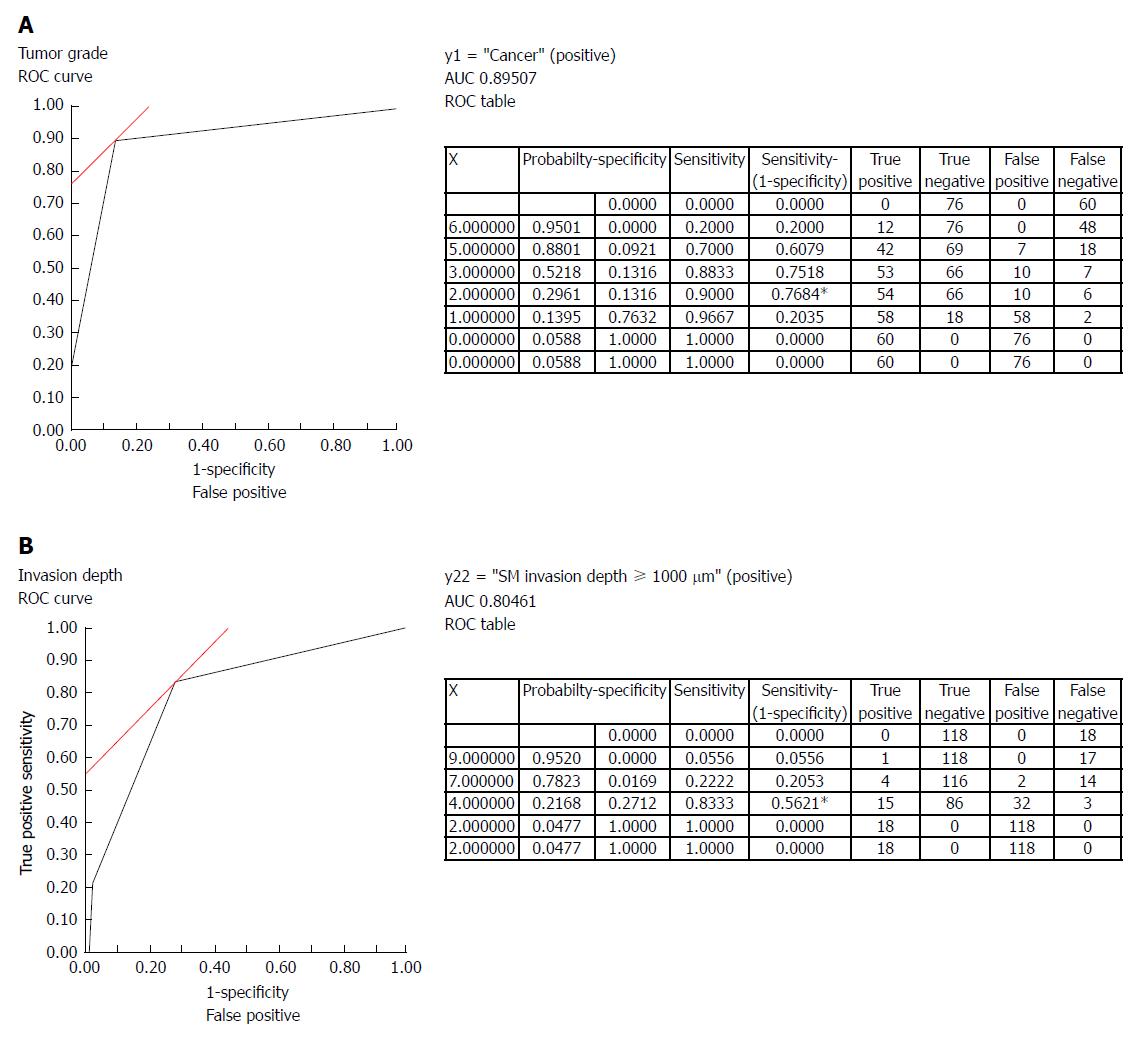Copyright
©The Author(s) 2018.
World J Gastroenterol. Nov 14, 2018; 24(42): 4809-4820
Published online Nov 14, 2018. doi: 10.3748/wjg.v24.i42.4809
Published online Nov 14, 2018. doi: 10.3748/wjg.v24.i42.4809
Figure 1 Study design.
Schematic of the retrospective study of resected specimens used develop and validate a novel statistical model based on narrow-band imaging findings for the diagnosis of colorectal lesions. All patients were of Japanese ethnicity and comprised 85 men and 53 women with a mean age of 65.7 ± 10.1 years. NBI: Narrow-band imaging; SM: Submucosa.
Figure 2 Classification of surface patterns of colorectal tumors as revealed by narrow-band imaging.
Colorectal lesions were broadly classified into tubular or papillary types, based on narrow-band imaging observations of histopathologic appearances and proliferation patterns; this was followed by an evaluation of the microstructure of the superficial layer of each lesion. Regarding the surface pattern, lesions with a clearly visualized surface microstructure were defined as the “clear type,” whereas lesions with a visualized but not readily discerned surface microstructure were defined as the “unclear type.” Lesions with a surface microstructure characterized by uniformly-sized pits in a regularly arranged pattern were defined as the “regular type,” whereas those with an irregular pit size and arrangement were defined as the “irregular type.” Representative images are shown. Magnification: 125 ×.
Figure 3 Vascular patterns of colorectal tumors as revealed by narrow-band imaging endoscopy.
Colorectal lesions were broadly classified into tubular or papillary types based on narrow-band imaging observations of the histopathologic appearances and proliferation patterns, followed by an evaluation of the microvessel architecture. “Disturbed arrangement” was defined as a disturbance in the form, size, and arrangement of microvessels; “disrupted vessels” was defined as an evident disruption of the microvessels; “varied caliber” was defined as a variance of caliber in the same vessel; “size irregularity” was defined as variance in caliber among different vessels; “thick vessels” was defined as an area harboring cyan-colored vessels relative to vessels in adjacent areas; “avascular area” was defined as an area with no visible vessels; and “vessel meandering” was defined as evident meandering of the blood vessels along a twisting and winding path. Representative images are shown. The locations of vessels representative of each vascular pattern and classification are denoted by arrowheads. Magnification: 125 ×.
Figure 4 Development of a model for predicting the tumor grade and depth of submucosal invasion in colorectal tumors based on narrow-band imaging findings.
The associations of surface and vascular patterns [as visualized by narrow-band imaging (NBI)] with the tumor grade (A) and depth of submucosa (SM) invasion (B) were analyzed in a multivariate analysis based on a logistic regression model, followed by the stepwise selection of variables from the NBI findings. A scoring system was established based on the statistical values thus estimated, and a model was developed for predicting the tumor grades and SM invasion depths of colorectal tumors. ROC: Receiver operating characteristic; AUC: Area under the curve.
- Citation: Maeyama Y, Mitsuyama K, Noda T, Nagata S, Nagata T, Yoshioka S, Yoshida H, Mukasa M, Sumie H, Kawano H, Akiba J, Araki Y, Kakuma T, Tsuruta O, Torimura T. Prediction of colorectal tumor grade and invasion depth through narrow-band imaging scoring. World J Gastroenterol 2018; 24(42): 4809-4820
- URL: https://www.wjgnet.com/1007-9327/full/v24/i42/4809.htm
- DOI: https://dx.doi.org/10.3748/wjg.v24.i42.4809












